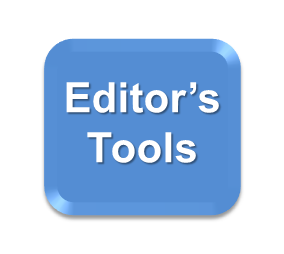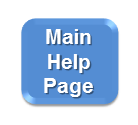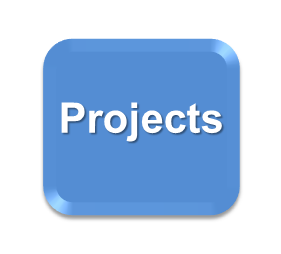Step 2 CS study guide
| WikiDoc Board Review |
|---|
| The Project |
| The Team |
| Guidelines |
| Question List |
| Quality Checklist |
| Medical Illustrations |
| Question Template |
| High Yield! |
| Normal Labs |
| Mnemonics |
| Test Taking Tips |
| Resources |

|
Step 2CS Study Guide |
Overview
The clinical skill (CS) component of Step 2, tests the fundamental clinical skills essential to safe and effective patient care under supervision.
Watch the official USMLE website video first to get an overall idea of this board examination. Please watch the USMLE official onsite orientation for STEP 2 CS Video [3].
Test Structure
USMLE Step 2 CS is designed to assess clinical skills through simulated patient interactions, in which the examinee interacts with standardized patients portrayed by actors. Each examinee faces 12 Standardized Patients (SPs) and has 15 minutes to complete history taking and clinical examination for each patient, and then 10 more minutes to write a patient note describing the findings, initial differential diagnosis list and a list of initial tests. Administration of the Step 2-CS began in 2004. Before 2004, a similar exam, the Clinical Skills Assessment (CSA) was used to assess the clinical skills of foreign medical graduates.
The clinical skills assessed during this examination are:
- Performing relevant medical history using proper communication skills and spoken English
- Performing focused physical examination
- Documenting the findings, diagnostic hypothesis and studies on the patient note
Grading
The test is graded on a straight pass/fail basis, without any numerical score associated with it (as opposed to the other parts of the USMLE series). In order to pass, one must achieve a grade of "pass" in each of the three sub-components of the exam.
- Integrated Clinical Encounter (ICE) - This component includes the ability of the examinees to collect pertinent clinical information from the SP, and to write an appropriate patient note with differential after the clinical encounter. The former part is graded by the simulated patient, and the latter by a practicing physician.
- Communication and Interpersonal Skills (CIS) - This component includes evaluating the examinees' question asking skills (asking open ended questions, avoiding repetition and medical jargon), information sharing skills (acknowledging patient concerns, providing counseling and information about what will happen in the future), and professionalism / rapport (asking about feelings and concerns, showing consideration for patient comfort, proper hygiene during examinations, providing empathy and respect for the simulated patient).
- Spoken English Proficiency (SEP) - This component includes clarity of spoken English communication in the context of pronunciation, word choice, and minimizing the need to repeat questions or statements.
Test Center Locations
The examination is offered in five cities across the United States:
- Philadelphia (PA)
- Chicago (IL)
- Atlanta (GA)
- Houston (TX)
- Los Angeles (CA)
On Test Day
Remember to bring the following items to the test center on test day:
- Scheduling permit
- Confirmation notice
- Unexpired government issued form of identification (with picture and signature) such as current driver's license or passport
- Comfortable professional clothing
- Clean white lab coat
- Standard stethoscope (not-enhanced)
Items not permitted:
- Electronic devices such as: beepers, recorders, watches, cameras, cell phones and other devices
- Study materials: any type of notes, reading materials and study summaries
- Other medical equipment
Interviewing Process
- Avoid using medical terms when interviewing. Use Layman terms instead.
Doorway Information
Mr/Mrs Wiki, a __ year old ___ (male/female) comes to the clinic complaining of "Chief Complaint"
Vitals: BP HR RR Temp
- Write down on given blue sheet of paper: name and last name, age, altered vitals, chief complaint
- If possible write quickly 3 differential diagnosis for the chief complaint and useful mnemonics
- Knock the door and enter the room
Introduction to Wiki-Patient
- Hello Mrs/Mr WikiPatient (shake hand with the patient, not if the patient is in pain)
- My name is Dr. Romero, the Dr. taking care of you today. I will ask you some questions and perform a brief physical exam on you.
- Is the room OK for you? (Dim light or adjust temperature if possible)
- Let me make you more comfortable (drape and/or dim light if applicable)
- How would you like to be addressed? (Wiki-patient says he/she likes to be called Wiki)
- What brought you in today? (Elicit chief complaint)
- I am very sorry to hear that! I will do my best to help you!
Chief Complaint
- Use the following mnemonics:
LIQORAAA (for pain)
- Location
- Intensity
- Quality
- Onset
- Radiation
- Alleviating factors
- Aggravating factors
- Associated symptoms
OCDPFAAA (for non-pain)
- Onset (time)
- Constant
- Duration
- Progression
- Frequency
- Alleviating factors
- Aggravating factors
- Associated symptoms
- For pediatric patients use ON CALL IDIOT
- Onset
- Number
- Cry
- Associated symptoms
- Listless
- Liquid (urine)
- Inmunization
- Diet, dehydration, daycare
- Infection/Ill contacts
- ORS: Oral rehydration solution
- Travel
Review of Systems
Past History
- To continue the interview you can use the PAMHITRFOSS mnemonic:
- Past Medical History (PMHx) / Previous episodes: i.e. Hypertension, Diabetes, MI
- Allergies to medications (prescribed and OTC), seasonal, food
- Medications prescribed and OTC (i.e. vitamins or acetaminophen)
- Hospitalizations
- Immunizations
- Trauma
- Surgical History (PSHx)
- Family History (FHX)
- Ob-Gyn History: FMP, LMP, Period every 30 days, lasts 5 days, tampons/pads, GPA (gestation, pregnancy, abortion)
- Social History (SHx): Occupation, Support (SAFE), tobacco, (PPD: 1pack per day for X years, EtOH (CAGE 0/4), recreational drugs, Travel
- Sexual: active, number of partners (men/women/both), condom use, STDs, HIV test
Counseling
- Immediately when the patient gives you the pertinent information
Challenging Questions
Please help WikiDoc by adding content here. It's easy! Click here to learn about editing.
Physical Exam
Please help WikiDoc by adding content here. It's easy! Click here to learn about editing.
Patient Note
- Remember to practice typing the patient note in less than 10 minutes
- Should you finish earlier, you can earn extra time towards typing the patient note
- You can practice typing the patient note on the official USMLE website [[4]].
History
- CC (chief complaint): 45 y/o F/M c/o "symptom"
- HPI (history of present illness):
- ROS: negative except as above
- PMHx: negative
- NKDA
- PSHx: none
- FHX: none
- OB-GYN Hx: FMP, LMP, periods come Q30 days and last 5 days, number tampons, G2 P1 A1
- SHx: occupation, support (SAFE), 1 PPD x 30 years, EtOH (CAGE 0/4), denies rec drugs or travel history
- SEXUAL: active with males/females/both. Uses condoms consistently. No STDs. HIV test.
Normal Physical Exam
- NAD
- General: hydrated, afebrile, tired, flat affect, tired, speech, movement
- VS: WNL except: BP/R/HR/T
- HEENT
Head: AT, NC Eyes: EOMI, PERRLA, normal eye fundoscopy. No conjuctival pallor Nose: no nasal congestion Throat: no tonsillar erythema/exudates/enlargement, central uvula Mouth: moist mucous membranes, good dentition
- Neck: supple, no JVD, no carotid bruits, no cervical LAD, normal thyroid
- Chest/Lungs: NT, TVF WNL, CTA & P B/L, (-) wheezes/crackles/rhonchi/rubs
- Heart: PMI not displaced, RRR (normal S1/S2 w/o m/g/r)
- Abdomen: BS +, ND/NT, soft, neg Murphy/McBurney/Rovsing/psoas/obturator sign, neg CVA tenderness, no Hepatosplenomegaly (organomegaly)
- Extremities: no edema/clubbing/cyanosis/asterixis, peripheral pulses 2+ and symmetric, no bruises, preserved active and passive ROM on abduction/adduction/flexion/extension/external rotation, strength 5/5, DTR 2+ B/L, preserved sensation B/L
- Skin: preserved turgor
- Neuro
- Mental Status: A & O x3, spells backward, recalls 3 objects, obey commands, normal speech. (Normal speech, no hostile behavior toward interviewer, normal affect and eye contact, attentive to interviewer, 3/3 registration, 3/3 recall at 3 times, preserved distant memories, oriented to person, date and place, obey commands, right handed, 1/5 on serial 7s, normal judgement
- CN II-XII WNL, Weber not lateralized, Rinne WNL.
- Motor: strength 5/5 in all limbs
- DTRs: 2/4, Babinsksy (-) B/L
- Sensation: intact to sharp and soft touch. Vibration and position normal
- Gait: normal, Romberg (-)
- Cerebellar: normal finger to nose/heel to knee, normal RAM
Reporting Physical Exam Briefly
VS WNL
- HEENT
NC/AT, EOMI, PERRLA, (-) LAD, (-) bruits
- Cardiovascular
RRR (-) m/r/g (-) JVD LE (-) edema, Pulses 2+ PT/DP B/L
- Lungs
CTA & P B/L
- Abdomen
+ BS, NT/ND, (-) HSM, (-) CVAT
- Neuro
CN WNL, muscle strength 5/5, DTR 2/4, sensation intact
Differential Diagnosis
Give 3 differential diagnosis with pertinent positives or negatives from the history and physical exam
Diagnostic Study/Studies
- Differed physical examination: breast, rectal, pelvic, genital
- CBC and electrolytes
- Cultures
- Imaging
- Do not include referrals, consults, and medical or surgical therapies
Wiki-Mnemonics
Please help WikiDoc by adding content here. It's easy! Click here to learn about editing.
Practice Cases
Please help WikiDoc by adding content here. It's easy! Click here to learn about editing.
Layman Terms
Please help WikiDoc by adding content here. It's easy! Click here to learn about editing.
Accepted Medical Abbreviations
- kg kilogram
- g gram
- mcg microgram
- mg milligram
- lbs pounds
- oz ounces
- m meter
- cm centimeter
- min minute
- hr hour
- C Celsius
- F Fahrenheit
VITAL SIGNS
- BP blood pressure
- HR heart rate
- R respirations
- T temperature
- yo year-old
- m male
- f female
- b black
- w white
- L left
- R right
- hx history
- h/o history of
- c/o complaining of
- ∅ without or no
- + positive
- - negative
Other WikiDoc Links
- Historian (medical)
- Medical record
- Medicine
- Physical examination
- http://www.wikidoc.org/index.php/The_Patient_History_in_Cardiovascular_Disease
- http://www.wikidoc.org/index.php/Category:Medical_terms
- http://www.wikidoc.org/index.php/USMLE_Step_2_Clinical_Skills
- http://www.wikidoc.org/index.php/Physical_exam
- http://www.wikidoc.org/index.php/Medical_sign
- http://www.wikidoc.org/index.php/Mental_status
External Resources
- http://www.usmle.org/step-2-cs/
- To the Official webpage of the USMLE about the Step 2CS
- ECFMG Official website

